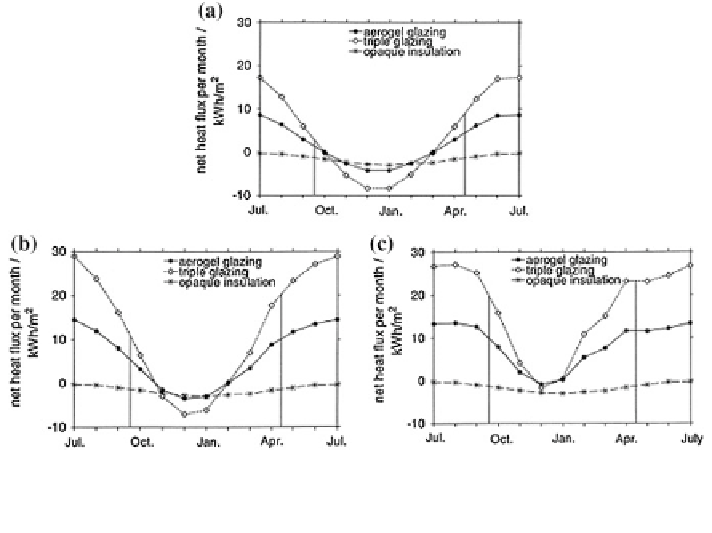Civil Engineering Reference
In-Depth Information
Fig. 15 Monthly net heat fluxes of an aerogel glazing compared with a solar triple glazing and
an opaque insulation calculated in three conditions: a north-oriented wall (a), an east- or west-
oriented wall (b), and a south-oriented wall (c) (Reim et al.
2002
)
The performance of the aerogel panel in winter is finally similar to the one of
the opaque insulation for all the investigated façade orientations.
Less applications were realized with monolithic aerogel glazings, due to still
rather difficult and expensive production process. An improvement in the optical
quality of the aerogel material is also needed, in order to remove the image
distortion when looking through an aerogel glazing. These are the most serious
restrictions for a spread of aerogel glazings as it substituted the conventional ones.
Recently, Aspen Aerogels engaged in the development of reinforced and highly
translucent monolithic aerogel for 'aerogel window' applications, but the tech-
nology is currently under study due to the difficulty in producing monoliths of high
optical quality (no defects, cracks, and inhomogeneities).
HILIT and HILIT+ projects showed that aerogel windows are the best solutions
for cold climates: they have a total solar energy transmittance (g-value) higher
than conventional double glazings, but at the same time, the U-value is equal to the
best triple-gas-filled glazing units. As shown in Fig.
16
, for the same U-value
(0.75 W/m
2
K), the aerogel glazing has a g-value of about 0.75, while the triple
glazing has a g-value of 0.50. The net heat flux is about +10 kWh/m
2
for the
aerogel system, while it is -15 kWh/m
2
for triple glazing.
The influence on the heating energy consumption was also evaluated through
simulations of annual energy consumption for a typical single-family house in
Denmark (Schultz and Jensen
2008
) built according to the present building code.
An aerogel glazing with 20 mm aerogel thickness resulting in a centre U-value of

